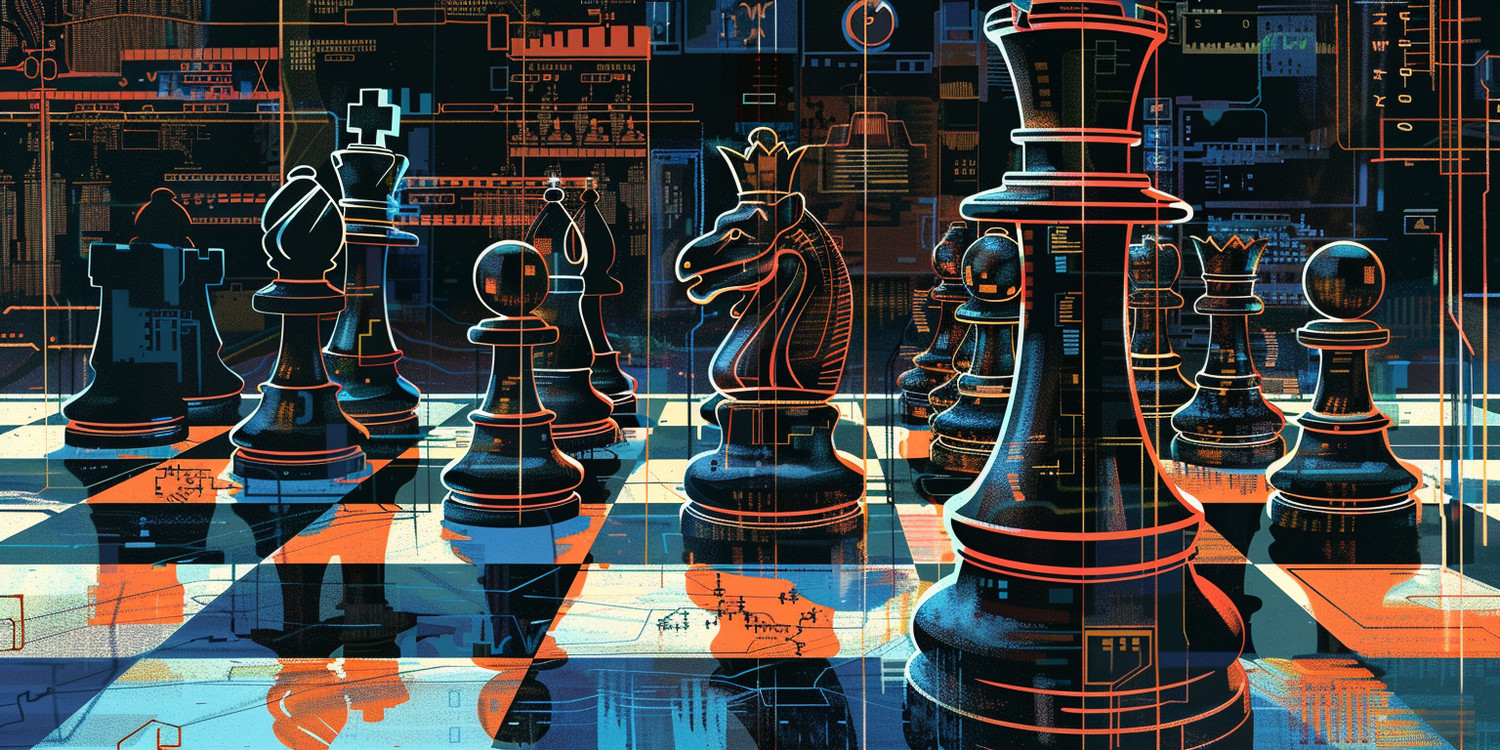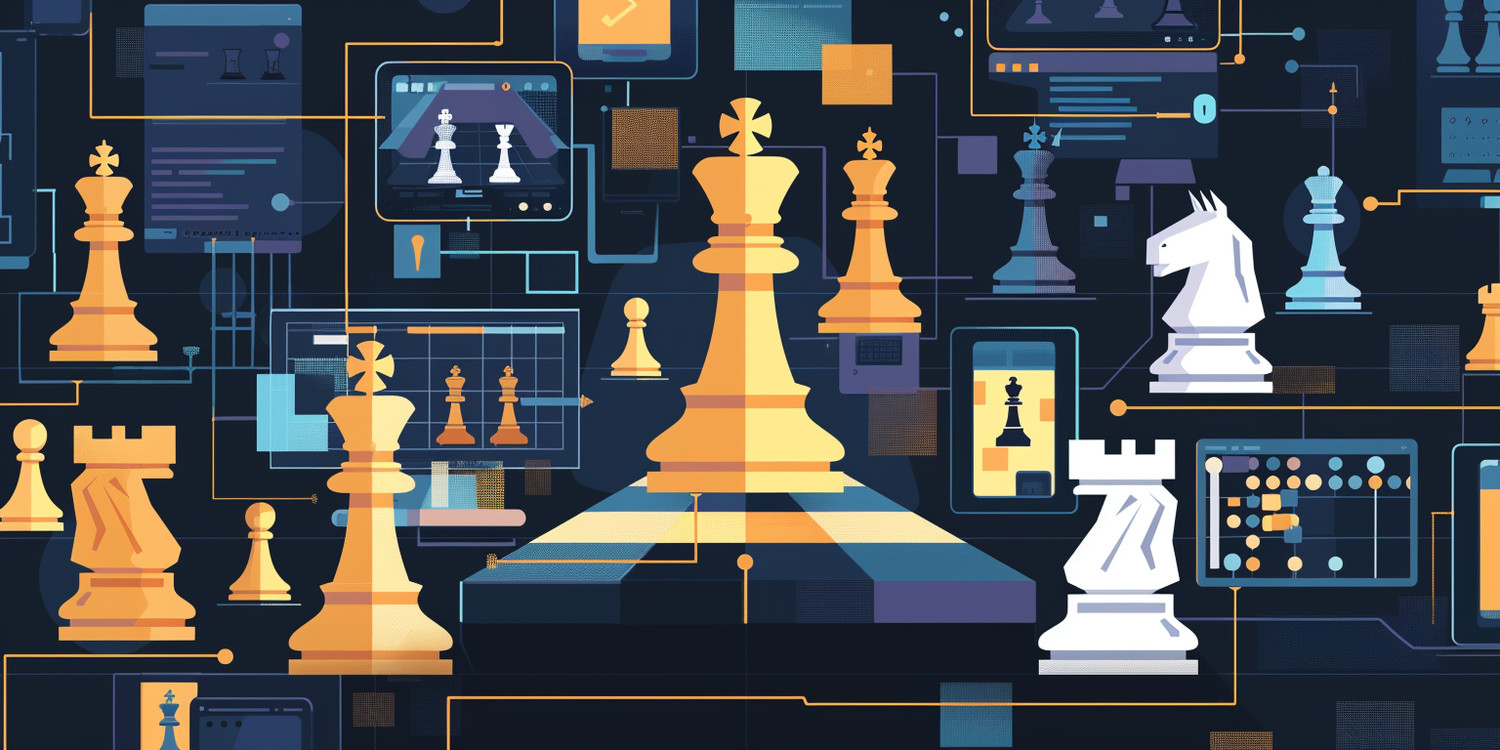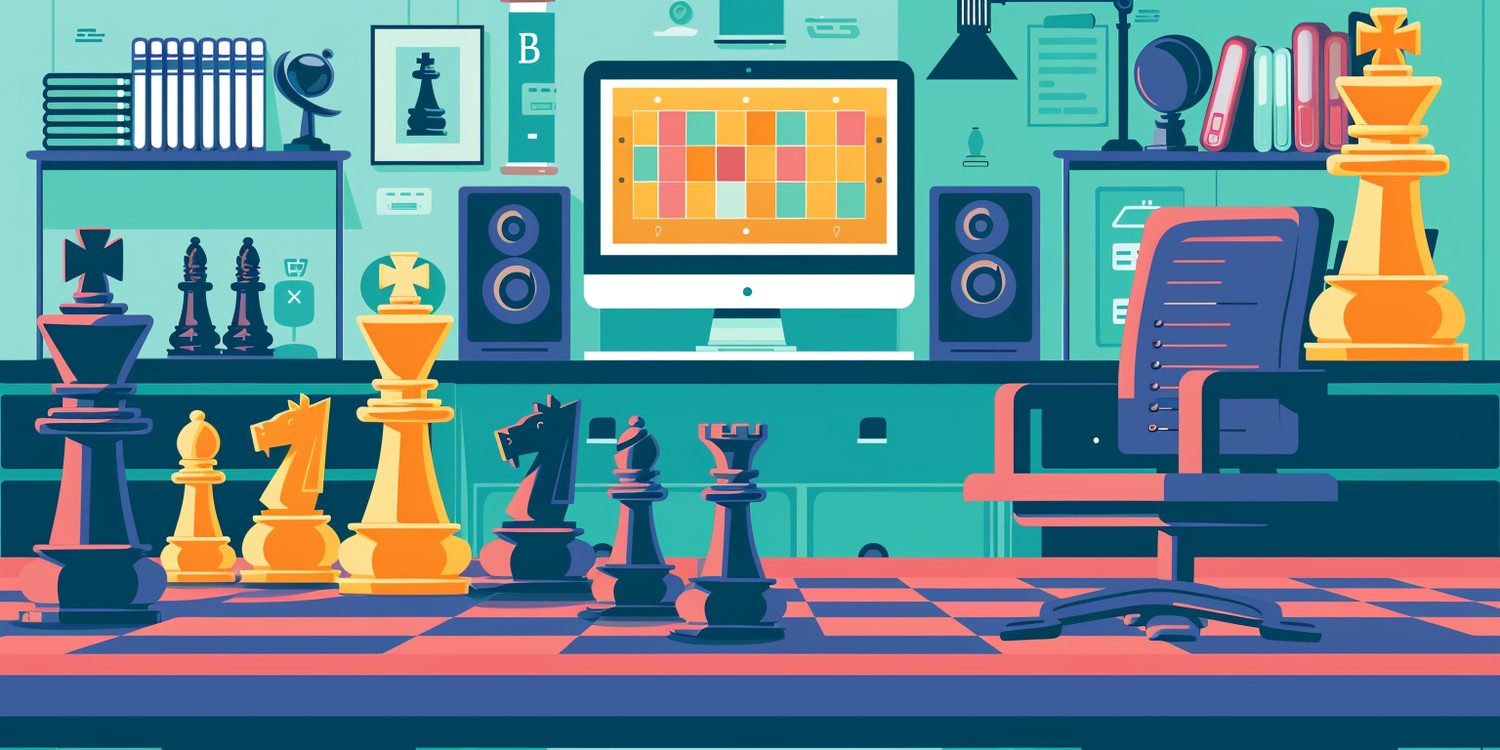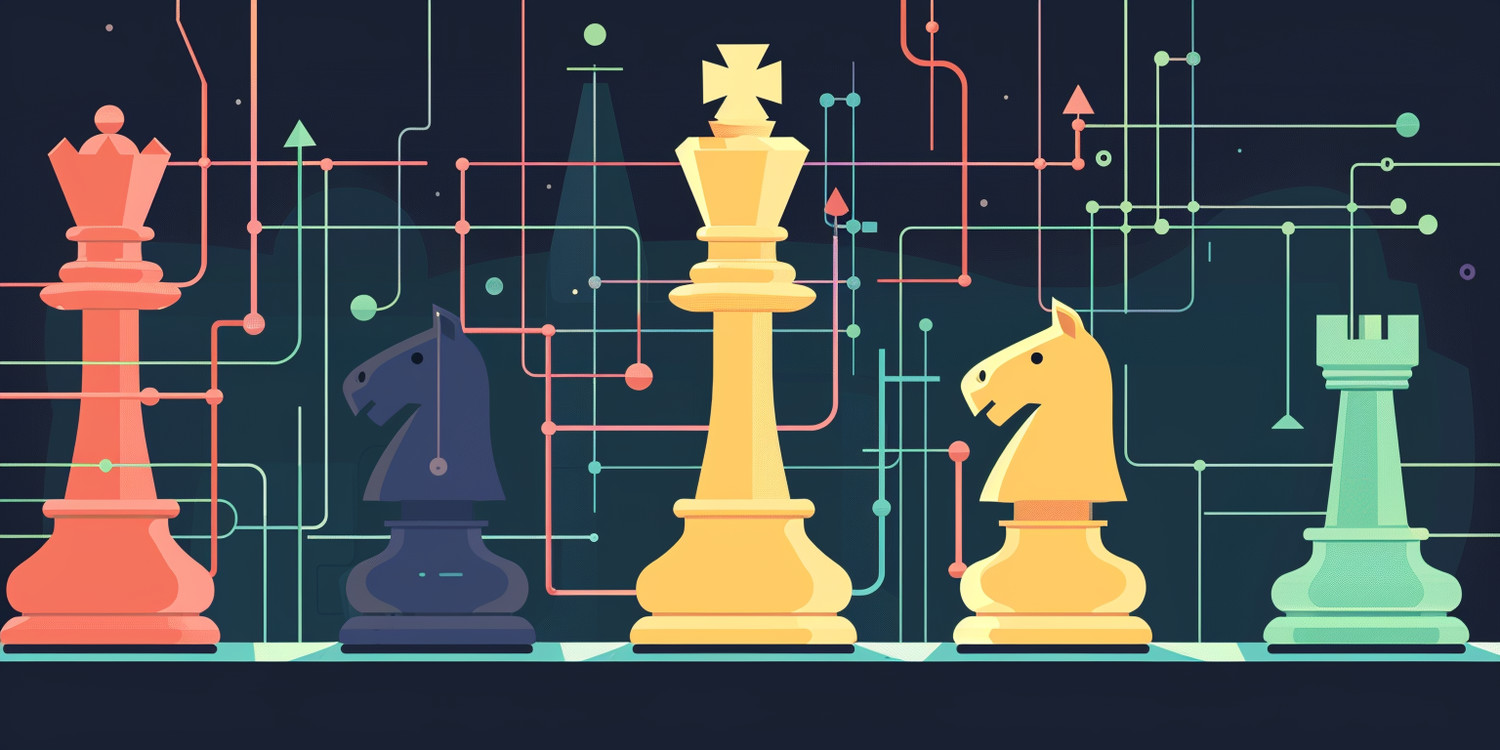
The integration of technology has indelibly reshaped the landscape of chess, fostering unprecedented opportunities for players of all proficiencies.
Online Chess Platforms
The proliferation of online chess platforms has democratized access to chess training, presenting a diverse array of resources accessible from any location with an internet connection. These platforms serve as virtual hubs for players to engage in real-time matches against opponents globally, fostering a dynamic and competitive environment. Furthermore, they furnish a wealth of educational materials, including interactive lessons, tactical exercises, and annotated games from grandmasters, thereby facilitating a structured approach to skill enhancement. Platforms such as Chess.com and Lichess.org offer comprehensive suites of tools designed to cater to players of all levels, from novices seeking to learn the fundamentals to seasoned competitors striving to refine their strategic acumen. These platforms also incorporate features such as personalized training plans, performance tracking, and community forums, thereby fostering a collaborative learning environment and enabling players to monitor their progress effectively and engage with peers. The accessibility and comprehensiveness of online chess platforms have rendered them indispensable resources for modern chess training.
Comprehensive Training Resources
Modern chess training is significantly enhanced by a plethora of comprehensive digital resources, providing players with structured pathways to improvement. These resources encompass a wide range of materials, including interactive lessons, tactical puzzles, strategic analyses, and endgame studies. Online platforms and dedicated training websites offer curated collections of these resources, designed to cater to various skill levels and learning styles. Interactive lessons often incorporate visual aids and step-by-step instructions, facilitating a deeper understanding of fundamental concepts. Tactical puzzles provide opportunities to hone pattern recognition and calculation skills, while strategic analyses offer insights into positional understanding and planning. Endgame studies focus on mastering essential endgame techniques, crucial for converting advantages into victories. Furthermore, many platforms offer personalized training plans tailored to individual strengths and weaknesses, ensuring that players focus on areas where they need the most improvement. The availability of these comprehensive training resources has transformed chess learning, making it more accessible, efficient, and effective for players of all levels.
Interactive Puzzles and Exercises
The integration of interactive puzzles and exercises into chess training enhances pattern recognition and problem-solving capabilities.
Video Lessons and Tutorials
The advent of video lessons and tutorials has revolutionized chess instruction, offering a dynamic and engaging alternative to traditional methods. Renowned chess masters, coaches, and educators now create and disseminate instructional videos covering a vast spectrum of topics, ranging from basic opening principles to advanced endgame techniques. These videos often incorporate visual demonstrations, annotated game analyses, and step-by-step explanations, facilitating a deeper understanding of complex concepts. The visual nature of video lessons allows viewers to observe and internalize strategic ideas more effectively than through text-based instruction alone. Furthermore, the ability to pause, rewind, and replay sections of the video enables learners to grasp intricate details at their own pace. Platforms such as YouTube and chess-specific training websites host a wealth of video content, providing learners with access to a diverse range of instructors and teaching styles. The accessibility and engaging nature of video lessons have made them an indispensable tool for modern chess training, empowering players of all levels to enhance their knowledge and skills effectively.
Structured Learning Paths
The availability of structured learning paths has significantly streamlined the process of chess improvement, providing players with clear and progressive roadmaps to enhance their skills. These learning paths typically consist of curated sequences of lessons, exercises, and assessments, designed to build a solid foundation of knowledge and gradually introduce more complex concepts. Online chess platforms and training websites often offer multiple learning paths tailored to different skill levels and learning objectives, allowing players to choose a path that aligns with their specific needs and goals. A well-designed learning path will typically begin with fundamental concepts such as piece movement, basic tactics, and opening principles, before progressing to more advanced topics such as strategic planning, endgame technique, and complex tactical motifs. Regular assessments and quizzes are incorporated to gauge understanding and identify areas requiring further attention. By following a structured learning path, players can avoid the common pitfall of haphazardly studying disparate topics and instead focus on building a cohesive and comprehensive understanding of the game. This structured approach maximizes efficiency and accelerates the learning process.
Access to Expert Instruction
Digital platforms democratize chess education, granting learners unprecedented access to instruction from grandmasters and seasoned chess coaches.
Chess Engines and AI Analysis
The advent of powerful chess engines and artificial intelligence (AI) analysis tools has fundamentally transformed the way chess players analyze and improve their games. Chess engines, such as Stockfish and Leela Chess Zero, are capable of evaluating chess positions with unparalleled accuracy and speed, providing players with objective assessments of their moves and identifying potential errors. AI analysis tools leverage these engines to provide comprehensive game analyses, highlighting tactical oversights, strategic weaknesses, and potential improvements. These tools can analyze entire games in a matter of seconds, providing players with detailed reports outlining critical moments and suggesting alternative lines of play. Furthermore, AI analysis can be used to identify recurring patterns in a player’s games, revealing areas where they consistently make mistakes or fail to capitalize on opportunities. By studying these analyses, players can gain valuable insights into their own strengths and weaknesses, enabling them to focus their training efforts on specific areas for improvement. The availability of chess engines and AI analysis tools has democratized access to high-level chess analysis, empowering players of all levels to learn from their mistakes and refine their strategic thinking.
Stockfish Overview
Stockfish, a preeminent open-source chess engine, stands as a cornerstone of modern chess analysis and training. Renowned for its exceptional analytical capabilities and unwavering objectivity, Stockfish has become an indispensable tool for players of all levels, from aspiring amateurs to seasoned grandmasters. Its strength lies in its ability to evaluate chess positions with remarkable accuracy, identifying tactical opportunities, strategic imbalances, and potential threats with unparalleled precision. Stockfish’s open-source nature has fostered a vibrant community of developers and enthusiasts who continuously contribute to its improvement, ensuring that it remains at the forefront of chess engine technology. The engine’s versatility extends beyond mere analysis; it can also be used for training purposes, allowing players to test their skills against a formidable opponent or to explore different variations and strategies. Furthermore, Stockfish’s integration into numerous chess platforms and software applications has made it readily accessible to a wide audience, solidifying its position as a ubiquitous and essential resource for chess improvement. Its analytical prowess and open-source ethos have cemented Stockfish’s legacy as a transformative force in the world of chess.
NNUE Technology (Neural Network Updated Efficiently)
NNUE technology enhances chess engines, enabling faster, more accurate position evaluations, improving training and analysis quality.
Chess Databases

Chess databases have revolutionized the study and analysis of chess, providing players with access to vast repositories of games played by masters and amateurs alike. These databases, such as those offered by ChessBase and other providers, contain millions of games, allowing players to research openings, study endgames, and analyze the strategies employed by top players throughout history. With powerful search and filtering capabilities, players can quickly find games that match specific criteria, such as opening variations, player ratings, or endgame types. By studying these games, players can gain valuable insights into the nuances of different positions and learn from the successes and failures of others. Furthermore, chess databases can be used to identify trends and patterns in modern chess, allowing players to stay abreast of the latest developments in opening theory and strategic thinking. The ability to access and analyze such a wealth of information has transformed chess training, empowering players to make more informed decisions and improve their overall understanding of the game. The comprehensive nature and analytical power of chess databases have made them indispensable tools for serious chess players.
Opening Study and Preparation
The advent of digital tools has profoundly transformed opening study and preparation in modern chess. Traditional methods, which relied heavily on books and manual analysis, have been augmented by powerful software and online resources that streamline the process and enhance its effectiveness. Chess databases, containing millions of games, allow players to research opening variations, identify theoretical novelties, and analyze the performance of different lines. Chess engines, such as Stockfish, provide invaluable assistance in evaluating opening positions and identifying potential weaknesses. Furthermore, specialized software tools enable players to create and manage opening repertoires, test their knowledge, and prepare for specific opponents. These tools often incorporate features such as spaced repetition, which helps players memorize key variations and improve their retention of opening knowledge. The combination of chess databases, engines, and specialized software has made opening study more efficient, more accurate, and more personalized, empowering players to enter games with a solid understanding of their chosen openings and a clear plan for the middlegame.
Game Analysis and Research
Technology enhances game analysis, enabling thorough exploration of strategies, tactical motifs, and identification of areas for improvement.
AI-Powered Training Tools
The integration of artificial intelligence (AI) into chess training has ushered in a new era of personalized and adaptive learning. AI-powered training tools leverage sophisticated algorithms to analyze a player’s strengths and weaknesses, identify areas for improvement, and generate customized training plans tailored to their specific needs. These tools can track a player’s progress over time, adjusting the difficulty and focus of the training as they improve. Furthermore, AI can be used to create realistic and challenging training scenarios, simulating the pressure and complexity of real-world games. Some AI-powered tools even offer real-time feedback and suggestions during training sessions, helping players to identify and correct mistakes as they occur. By providing personalized guidance and adaptive challenges, AI-powered training tools can accelerate the learning process and help players reach their full potential. The ability of AI to analyze vast amounts of data and generate customized training plans has made it an invaluable asset for modern chess training, empowering players to learn more effectively and efficiently.
Personalized Training Plans
The advent of personalized training plans has revolutionized chess instruction, enabling players to focus their efforts on areas where they need the most improvement. These plans, often generated by AI-powered training tools, take into account a player’s current skill level, strengths, weaknesses, and learning goals. By analyzing a player’s game history and performance data, these tools can identify recurring patterns, tactical oversights, and strategic weaknesses. Based on this analysis, the training plan will prescribe specific exercises, lessons, and practice games designed to address these areas. Personalized training plans are not static; they adapt and evolve as the player improves, ensuring that the training remains challenging and relevant. Furthermore, these plans often incorporate elements of gamification, such as progress tracking, rewards, and leaderboards, to keep players motivated and engaged. The ability to tailor training to individual needs and preferences has made personalized training plans an invaluable asset for modern chess training, empowering players to learn more effectively and efficiently.
Lucas Chess: AI-Powered Desktop Trainer
Lucas Chess, a free desktop application, provides AI-driven training tools, customizable plans, and simulated opponents for comprehensive chess improvement.
Spaced Repetition Software
Spaced repetition software (SRS) has emerged as a powerful tool for enhancing memory retention and accelerating the learning process in chess. This technique leverages the psychological principle of spaced repetition, which posits that information is better retained when reviews are spaced out over increasing intervals of time. SRS algorithms schedule reviews based on a player’s performance, presenting material more frequently when it is first learned and then gradually increasing the intervals between reviews as retention improves. This approach optimizes the learning process by focusing on areas where the player is struggling and reinforcing knowledge that has already been acquired. In chess, SRS can be used to memorize opening variations, tactical patterns, endgame techniques, and other essential concepts. By systematically reviewing material at spaced intervals, players can solidify their knowledge and improve their ability to recall information quickly and accurately during games. The integration of SRS into chess training has proven to be highly effective in enhancing memory retention and accelerating the learning process, empowering players to master a vast amount of chess knowledge with greater ease and efficiency.
Chessable: MoveTrainer Technology
Chessable’s MoveTrainer technology exemplifies the application of spaced repetition principles to chess learning, offering a highly effective method for memorizing openings, tactics, and endgames. This innovative technology utilizes a sophisticated algorithm to track a player’s progress and schedule reviews based on their performance. When a player encounters a new concept or variation, MoveTrainer presents it repeatedly over increasing intervals of time, reinforcing the information and improving retention. The system adapts to the player’s individual learning pace, focusing on areas where they struggle and reinforcing knowledge that has already been acquired. MoveTrainer also incorporates interactive elements, such as quizzes and exercises, to further enhance engagement and solidify understanding. By combining spaced repetition with interactive learning, Chessable’s MoveTrainer technology provides a powerful and efficient way for chess players to master a vast amount of chess knowledge and improve their overall playing ability. The effectiveness of this technology has made Chessable a popular platform for chess training among players of all levels.
Enhanced Memory Retention
Spaced repetition software significantly bolsters memory retention of chess concepts, facilitating quicker recall and improved strategic application.
Online Chess Communities

The proliferation of online chess communities has fostered a collaborative and supportive environment for chess players of all levels. These communities, often hosted on platforms such as Chess.com, Lichess.org, and various social media groups, provide opportunities for players to connect with one another, share their experiences, and learn from each other. Online chess communities offer a variety of resources, including forums, chat rooms, and study groups, where players can discuss chess strategy, analyze games, and ask questions. These communities also host online tournaments and events, providing players with opportunities to compete against others and test their skills. Furthermore, online chess communities often feature content created by experienced players and coaches, such as articles, videos, and training materials. By participating in online chess communities, players can expand their knowledge, improve their skills, and find support from like-minded individuals. The collaborative and supportive nature of these communities makes them an invaluable resource for modern chess training, fostering a sense of camaraderie and accelerating the learning process.
Connecting with Other Players
Technology has revolutionized the way chess players connect with one another, fostering a global network of enthusiasts and learners. Online chess platforms and social media groups provide numerous avenues for players to find opponents, training partners, and mentors. These platforms offer features such as matchmaking systems, which pair players of similar skill levels for online games, and forums, where players can discuss chess strategy, analyze games, and seek advice. Social media groups dedicated to chess provide a space for players to share their experiences, ask questions, and connect with others who share their passion for the game. Furthermore, online chess communities often host virtual events and tournaments, providing opportunities for players to compete against one another and build relationships. The ability to connect with other players from around the world has made chess more accessible and engaging than ever before, fostering a sense of community and accelerating the learning process. This interconnectedness allows for diverse perspectives and collaborative learning opportunities that were previously unavailable.
Collaborative Learning
Online platforms facilitate collaborative learning through shared analysis, study groups, and peer feedback, enhancing understanding and skill development.
Digital Chess Books and Training Materials
The shift from traditional print media to digital formats has revolutionized access to chess books and training materials. Digital chess books offer numerous advantages over their physical counterparts, including portability, searchability, and interactivity. With digital books, players can carry an entire library of chess knowledge on a single device, making it easy to study and learn on the go. The ability to search for specific keywords and phrases allows players to quickly find relevant information, saving time and effort. Furthermore, digital chess books often incorporate interactive features, such as embedded diagrams, annotated games, and exercises, enhancing engagement and facilitating a deeper understanding of the material. In addition to digital books, a wide range of other digital training materials are available, including video courses, interactive puzzles, and software tools. These resources provide players with a variety of learning options to suit their individual preferences and learning styles. The accessibility, convenience, and interactivity of digital chess books and training materials have made them an invaluable asset for modern chess training.
Online Access and Training Tools
The advent of online platforms has democratized access to a vast array of chess training tools, empowering players of all levels to enhance their skills and knowledge. Online chess platforms, training websites, and digital libraries provide a wealth of resources, including interactive lessons, tactical exercises, annotated games, and digital chess books. These resources are accessible from any location with an internet connection, making it easy for players to study and learn on the go. Furthermore, online platforms often incorporate features such as personalized training plans, performance tracking, and community forums, enhancing the learning experience and fostering a sense of collaboration. Online access also facilitates participation in virtual tournaments and events, providing players with opportunities to compete against others and test their skills. The combination of online access and a diverse range of training tools has made chess learning more accessible, convenient, and effective than ever before, enabling players to reach their full potential.
Creating Custom Training Content
Technology empowers users to create bespoke training materials, tailoring learning to specific needs and maximizing individual improvement potential.
Smart Boards and VR Training
Emerging technologies like smart boards and virtual reality (VR) are poised to revolutionize chess training, offering immersive and interactive learning experiences. Smart boards, which digitally track piece movements and analyze positions in real-time, allow players to seamlessly integrate traditional board play with digital analysis tools. These boards can connect to chess engines, databases, and online platforms, providing players with instant feedback and analysis during practice games. VR training, on the other hand, offers a fully immersive virtual environment where players can visualize complex chess positions in 3D, interact with virtual opponents, and practice tactical scenarios in a realistic setting. VR can also be used to simulate historical chess matches, allowing players to experience the game from the perspective of legendary masters. While still in their early stages of development, smart boards and VR training hold immense potential for transforming chess education, offering engaging, interactive, and personalized learning experiences that can accelerate skill development and enhance overall understanding of the game.
Immersive Learning Experiences
The integration of technology into chess training is creating increasingly immersive learning experiences that enhance engagement and accelerate skill development. Virtual reality (VR) and augmented reality (AR) technologies are transforming the way players interact with the game, providing realistic and interactive simulations of chess positions and scenarios. VR can transport players to virtual chess environments, allowing them to visualize complex strategic concepts in 3D and interact with virtual opponents. AR can overlay digital information onto physical chess boards, providing real-time analysis and guidance during practice games. Interactive chess software and online platforms also offer immersive learning experiences through features such as annotated games, video lessons, and tactical puzzles. These resources engage players through a variety of multimedia formats, catering to different learning styles and preferences. The combination of immersive technologies and interactive content is making chess training more engaging, effective, and enjoyable, empowering players to learn more quickly and deeply.
Advanced Analysis Capabilities
Smart boards and VR training platforms provide advanced analysis, offering insights into gameplay and facilitating strategic understanding.
AI-Powered Technique Analysis

The application of artificial intelligence (AI) to technique analysis has revolutionized the way chess players identify and address their weaknesses. AI-powered analysis tools can analyze a player’s games, identifying recurring patterns, tactical oversights, and strategic weaknesses. These tools provide detailed reports outlining critical moments in the game, suggesting alternative lines of play, and highlighting areas where the player could have made better decisions. Furthermore, AI can be used to assess a player’s strengths, identifying their preferred openings, tactical motifs, and endgame techniques. By understanding their strengths and weaknesses, players can tailor their training efforts to focus on areas where they need the most improvement. AI-powered technique analysis provides an objective and unbiased assessment of a player’s skills, helping them to identify and correct their flaws more effectively. The ability of AI to analyze vast amounts of data and provide personalized feedback has made it an invaluable asset for modern chess training, empowering players to reach their full potential.
Identifying Strengths and Weaknesses
The utilization of technology in chess training has greatly enhanced the ability to accurately identify a player’s strengths and weaknesses. AI-powered analysis tools can dissect a player’s game history, revealing recurring patterns, tactical predilections, and strategic vulnerabilities. By analyzing a large sample of games, these tools can generate comprehensive reports that highlight a player’s preferred openings, tactical motifs, and endgame proficiencies, as well as areas where they consistently make mistakes or struggle to capitalize on opportunities. This objective assessment provides valuable insights into a player’s playing style and skill set, allowing them to tailor their training efforts to maximize their strengths and address their weaknesses. Furthermore, technology can be used to track a player’s progress over time, monitoring their improvement in specific areas and identifying any emerging weaknesses. The ability to accurately identify strengths and weaknesses is crucial for effective chess training, enabling players to focus their efforts on areas where they can make the most significant gains.
Personalized Feedback
AI-driven tools deliver personalized feedback, offering tailored guidance to address individual weaknesses and accelerate chess skill improvement.
Chess Bots and AI Opponents
The advent of chess bots and AI opponents has provided players with readily available and customizable training partners, offering a convenient way to practice and improve their skills. These AI opponents range in strength from beginner level to grandmaster level, allowing players to choose an opponent that matches their current skill level. Chess bots can be used to practice specific openings, tactical motifs, or endgame techniques, providing players with targeted training scenarios. Furthermore, some AI opponents can adapt their playing style to match a player’s weaknesses, providing a challenging and personalized training experience. Chess bots also offer the advantage of being available at any time, allowing players to practice whenever they have free time. The ability to practice against AI opponents has become an essential part of modern chess training, providing players with a flexible and effective way to hone their skills and prepare for competitive games. The continuous improvement of AI technology ensures that chess bots will continue to play an increasingly important role in the future of chess training.
Humanlike AI Opponents
The development of humanlike AI opponents has significantly enhanced the training experience for chess players, providing a more realistic and engaging simulation of actual competition. Unlike traditional chess engines that play with perfect accuracy and unwavering objectivity, humanlike AI opponents incorporate elements of human fallibility, such as occasional blunders, strategic inconsistencies, and emotional responses. These AI opponents can be programmed to mimic the playing style of specific human players, allowing trainees to practice against simulated versions of their rivals or study the strategies of legendary masters. Furthermore, humanlike AI opponents can provide personalized feedback and guidance, offering insights into the player’s strengths and weaknesses. The ability to practice against opponents that exhibit humanlike characteristics has made AI training a more valuable tool for preparing players for the psychological and strategic complexities of real-world chess competition. The ongoing refinement of AI technology promises to further blur the lines between virtual and human opponents, creating increasingly realistic and engaging training experiences.
The Future of Chess Training
Adaptive Difficulty Levels
AI opponents offer adaptive difficulty, adjusting to skill levels, ensuring continuous challenge and optimal learning for chess players.

